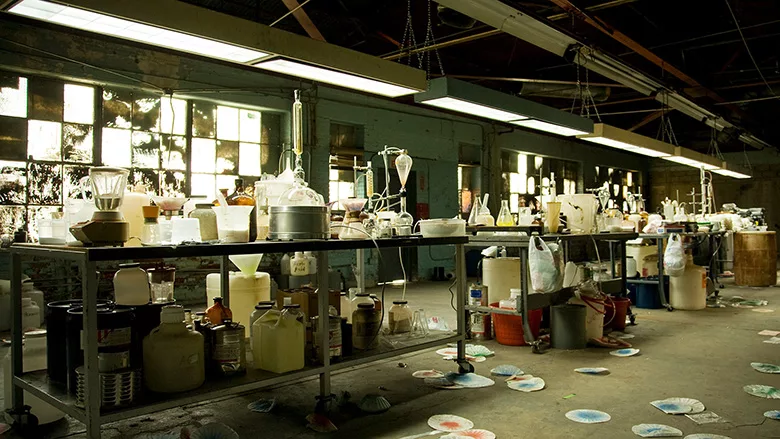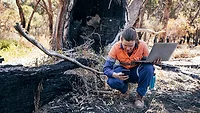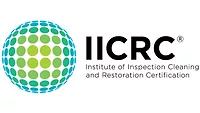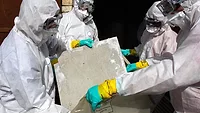The Unspoken Hazards Associated with Recreational Drug Use in Properties

Photo credit: byllwill / E+ via Getty Images
The opioid and methamphetamine epidemic continues to gain public awareness as more and more Americans succumb to the disease and thousands of Americans die due to overdoses. However, one aspect of the problem gets little attention. Contamination of surfaces and belongings caused by the recreational use of drugs can expose others to severe health risks whether they are using the drugs or not.
Unsuspecting hotel patrons, hospitality staff, new homeowners or apartment tenants may be exposed to harmful levels of drugs without even knowing it. While the hazards associated with the manufacturing of methamphetamines and fentanyl are well researched and understood, the health and safety implications associated with residual drug contamination on surfaces and belongings following recreational drug use is not.
Currently, only half of the states in America have set remediation standards or regulations associated with drug contamination, and within those states with regulations, those regulations are typically limited to methamphetamine drug laboratories. Very few states recognize fentanyl and even fewer recognize the health and safety issues associated with recreational use of both drugs.
Colorado and Minnesota are currently the only two states that consider contamination from both recreational use and manufacturing of drugs in their state regulations. Because of the lack of regulations and guidelines associated with contamination of surfaces due to recreational drug use, property owners and building managers are left to decide themselves if they would like to evaluate properties and remediate. There is currently no protocol to formally notify future occupants, or county public health officials, and there is no regulatory requirement to remediate the property.
Recreational use of drugs in indoor spaces can cause contamination by direct contact with the surface as well as indirect contact. For instance, smoking of methamphetamines allows for aerosols to be generated and released into the air and eventually settle or permeate onto surfaces and building materials.
Lack of guidance
Unlike drug laboratories, properties that have been exposed to drugs through recreational use may not exhibit visual or olfactory indicators that contamination is present. Property owners and building managers generally have to rely on information from neighbors, employees or others regarding the use of drugs or visual indicators, such as drug paraphernalia.
In addition to the lack of regulations and standards, remediation and clean-up guidelines are few and far between when it comes to recreational use. Some states have guidance and clean-up documents available. However, these are typically based on methamphetamine laboratories. Very little information directly related to the impact of recreational use of drugs to surfaces and personal properly along with remediation recommendations has been published.
The United States Environmental Protection Agency recently revised their cleanup guidelines in August 2021. Recognizing the emerging threat of fentanyl and the significant hazards fentanyl poses to the public, EPA updated the voluntary guidelines for methamphetamine laboratories document to include a new chapter on fentanyl remediation. Until guidance documents and research identify the hazards associated with recreational use, it is recommended as best practice to follow guidelines associated with drug laboratories.
Take the proper steps to clean drug contamination
If recreational drug use is suspected at a property, the following steps are recommended to properly assess potential hazards, remediate and return the property for occupancy.
First, gather as much background information as possible. This includes the suspected drugs of concern as well as locations suspected drug use may have occurred. Secure the property to prevent unauthorized entry. The structure should not be reoccupied until assessment findings identify the absence of fentanyl or levels of methamphetamines below clean-up guidelines as defined by local and state regulations.
Then hire an environmental consultant such as a certified industrial hygienist to assess the property, perform the necessary sampling, and advise on suitable recommendations for remediation. The preliminary site assessment will typically include the collection of samples from representative surfaces within the property. Wipe sampling is the most often recommended method for sampling surface concentrations of methamphetamine and fentanyl. The complexity of sampling warrants the use of experienced CIHs to ensure correct methods and locations and is required in some states. Based on assessment findings, recommendations for decontamination of the space will be generated.
Hire a qualified contractor to conduct remediation as required. Several states have developed methamphetamine lab remediation certification programs for contractors. If the state does not have their own certification program, at a minimum, contractors should complete 40-hour HAZWOPER training.
Remediation typically begins with the bulk removal of contaminated materials and items that cannot be adequately decontaminated (e.g., porous/soft goods), followed by decontamination of the structure and remaining items. In general, this includes vacuuming walls, floors and other hard surfaces using HEPA filter, followed by washing of surfaces using a detergent-water solution. Specialized decontamination may be necessary for large appliances, electronics and HVAC systems. Prior to and during remediation, continue to ventilate or “air out” the structure with fresh, outdoor air (e.g., open doors and windows; use fans, blowers and/or a negative air unit with HEPA filtration system) to ensure worker safety and health. Continue ventilation during the remediation process, taking steps to protect nearby or adjacent structures from contamination. Avoid disturbance of materials or surfaces while entering the space to access windows.
Finally, retain a CIH or other qualified environmental health specialist to conduct post-remediation sampling to verify decontamination efforts were successful.
Worker health and safety
In addition, to proper decontamination of spaces, worker safety and health is also a priority. Personal protective equipment is essential in controlling the exposure risk and can include Level C PPE, which includes a full-face or half-mask NIOSH-approved air purifying respirators; hooded chemical-resistant clothing (overalls; two-piece chemical-splash suit; disposable chemical-resistant overalls); gloves, outer, chemical-resistant; gloves, inner, chemical resistant. It is also important to decontaminate or discard, as appropriate, all clothing and PPE worn during remediation.
It is also essential to consider waste disposal during decontamination efforts. Some items or materials removed which are known to be contaminated with methamphetamine may be classified as hazardous depending upon federal, state and local requirements and may not be appropriate for disposal at a local landfill. In addition, if fentanyl contamination is present the waste may be disposed of as pharmaceutical waste. You should always refer to the appropriate federal, state and local solid waste authority to determine what disposal procedures are necessary. Several state requirements and guidelines suggest that all contaminated materials be wrapped and sealed before they are removed from the site to avoid spreading the contamination to unaffected areas.
As the drug epidemic continues, health and safety issues with not only those using the drugs, but those exposed second hand will also continue to be an issue. Understanding the hazards associated with recreations drug use and ensuring proper decontamination of surfaces and furnishings is essential in protecting the public.
Looking for a reprint of this article?
From high-res PDFs to custom plaques, order your copy today!









